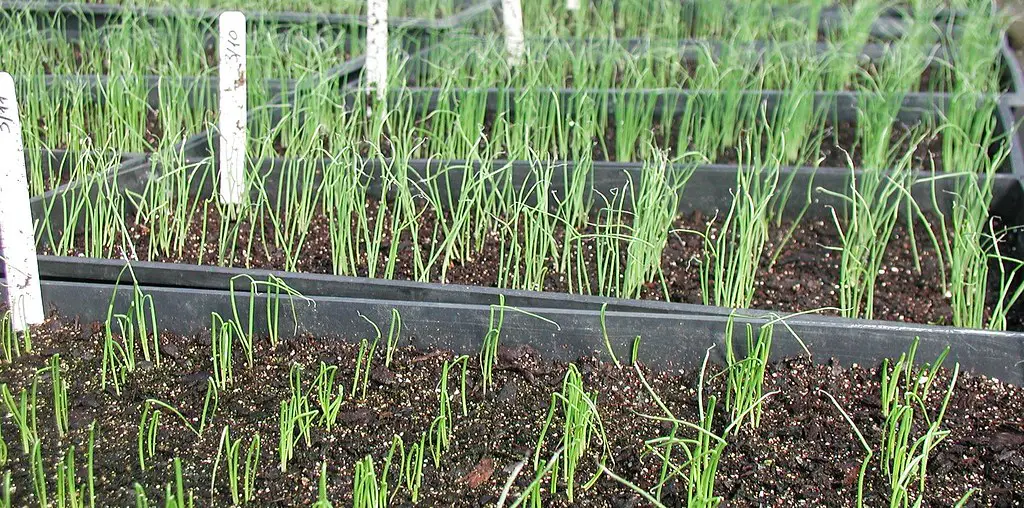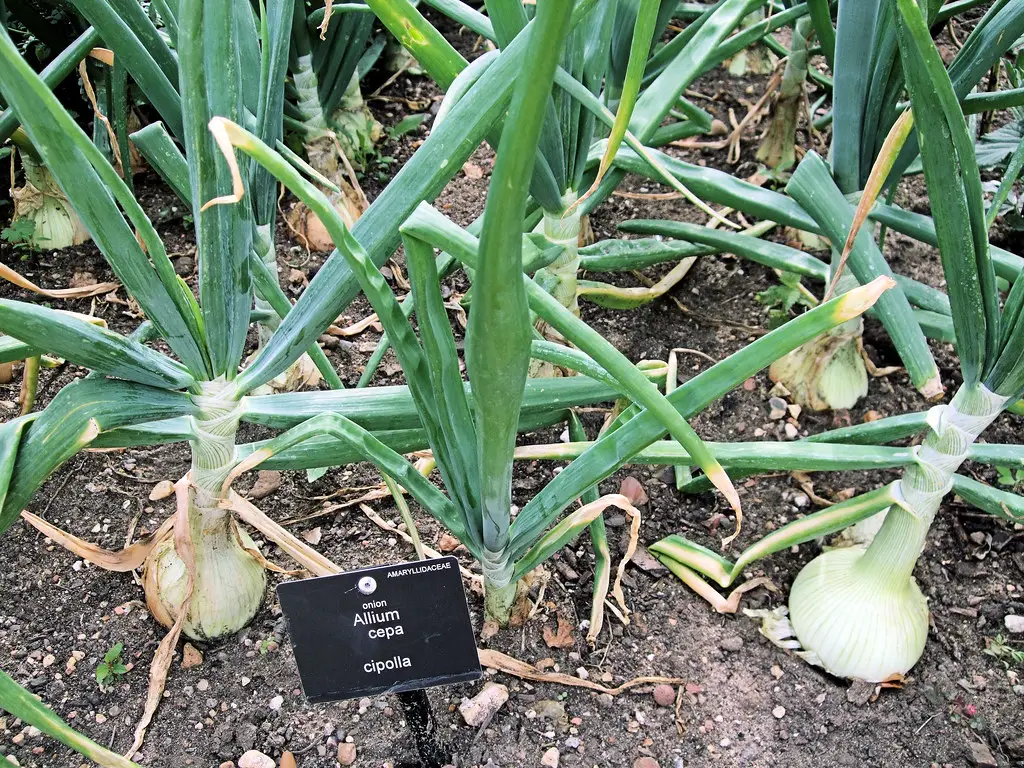How Long Does It Take For Onion Seeds To Germinate? Onions are a staple of almost every cuisine around the world, Additionally, they also store extremely well which means that it is a worthwhile plant to grow in your garden at home. However, many people may wonder how long it takes for onion seeds to actually germinate when planted in the garden?
Onion seeds will take approximately 5 to 15 days to germinate at temperatures of 50 to 68°F (10 to 20°C) according to a study published by the University of California. However, the rate of germination is significantly affected when the temperature falls below 41°F (5°C), but unlike many other vegetables onions will still germinate at close to freezing temperatures but this germination will take an extremely long time. The table below shows the impact of temperature on the rate of germination;
| Days To Germinate | Temperature (°F) | Temperature (°C) |
| 135.8 | 32 | 0 |
| 30.6 | 41 | 5 |
| 13.4 | 50 | 10 |
| 7.1 | 59 | 15 |
| 4.6 | 68 | 20 |
| 3.6 | 77 | 25 |
| 3.9 | 86 | 30 |
| 12.5 | 95 | 35 |
| – | 104 | 40 |
As a result of the onion plant being extremely resistant to cold, many gardeners sow the seeds in mid-winter directly into the garden if they live in a relatively mild climate however I personally plant directly into seed trays in mid-winter and keep the seed trays indoors.
The reason for this is because it is possible to get onion seeds off to an extremely early start if the temperatures are only a fruit few degrees warmer. The other added benefit is that it allows the plants to be multi sown which is a technique pioneered by Charles Dowding and is highly recommended to reduce the amount of work associated with growing vegetables by reducing the planting time and the maintenance involved.

The planting time is reduced because each time a planting hole is created several seedlings are planted simultaneously reducing the time taken. The other added benefit is that it allows the plants to be more easily maintained because plants are grown in clumps that tend to be planted further apart.
This enables the weeds to be removed using a dutch hoe rather than hand weeding which is significantly faster, particularly when weed removal is done regularly and they don’t have the time to establish.
Does Planting Onions In Clumps Affect Their Size?
Multisowing is most effective when there are 4 to 6 seeds planted per clump with an aim of getting 4 to 5 mature onions from The clump. With this number of seedlings in the clump, it is possible to get reasonably size bulbs from the clumps.
However, if the number of plants within the clump exceeds 5 it will start to have a negative effect on the size of the bulbs produced as such it is important to ensure that if there are too many plants within the clump they are thinned out before they are planted out into the garden.
The one exception to this is if you are wanting to harvest some of the plants early as spring onions rather than allowing them to develop bulbs. If this is the case it is common to see people putting in around 10 seeds in a clump.
When the seedlings reach the point at which they are a reasonable size the spring onions need to be removed by twisting rather than pulling to ensure that the disturbance to the remaining onions is minimized. If you want to learn more about this technique watch the video from Charles Dowding below.
How Grow Onions
As mentioned above onions can germinate at relatively low temperatures which means that the plants can be started in mid-winter in most places and they are also extremely forgiving in terms of the amount of time they spend in the seed tray. If weather conditions are still extremely poor onion seedling will not be negatively affected if they are held in the seed trays for significantly longer than other plants.
When planting the seed start by filling a seed tray with good quality seed raising mix and ensure that you firm the soil down with your fingers to create a solid plug as this will make it easier to transplant the seedlings later on.
Use a dibber to make the holes for the seeds and placed 4 to 6 seeds in each cell at a depth of approximately half an inch and cover the seedlings over. At this point, it is important to ensure that the plant remains moist as this will allow them to grow and develop quickly.
In most cases seedlings can spend 6 to 8 weeks in the seed tray, however, this can be extended significantly if required. When the weather is beginning to warm up in early spring you can plant the onions out into the garden. As they are relatively hardy plants they can resist frost so you do not have to wait until there is a frost-free environment to plant the seedlings out into the garden.

The seedling clumps should ideally be planted approximately 10 inches apart which may seem excessive initially however it will make it significantly easier to maintain the plants on an ongoing basis. The other highly beneficial advantage of maintaining significant space between the clumps is it allows you to interplant the next lot of crops while the onions are still in the garden. This will ensure that you have an ongoing supply vegetables throughout the year.
In terms of soil conditions, onions are quite forgiving, however, like any vegetable they will benefit from having additional compost added to the bed prior to planting. They also prefer a sunny location that gets 6 to 8 hours of sun per day ideally but they are one of those vegetables that will tolerate shade to some degree though it may affect the size of the bulbs produced.
As mentioned above, onions can pretty much be harvested at any stage throughout their life which means that you can choose the harvest them as spring onions early in the season or allow them to fully mature and maximize the size of the bulbs.
If creating large bulbs is your objective it is important to allow the plants to grow to the point where the top growth begins to collapse and turn brown which is an indication that the onions have reached their maximum size.
When removing the onions for long-term storage it is important to dry the bulbs out for a week or two as this will reduce the chances of you having any issues with rot. Once the onions have a developed an outer skin that is papery and appear to be fully dry they can be stored in a cool, dark, and well-ventilated area. Under these storage conditions, the Onion should last literally months and months.
I hope you found this article useful and have great success growing onions at home. If you have any additional comments or questions please leave them in the section below.
Relevant Articles
How Many Varieties Of Onions Are There?
Onion Seeds vs Onion Sets – Which is best?
How Many Onions Grow From One Bulb?
Do Onions Grow Underground? What Is Normal?
